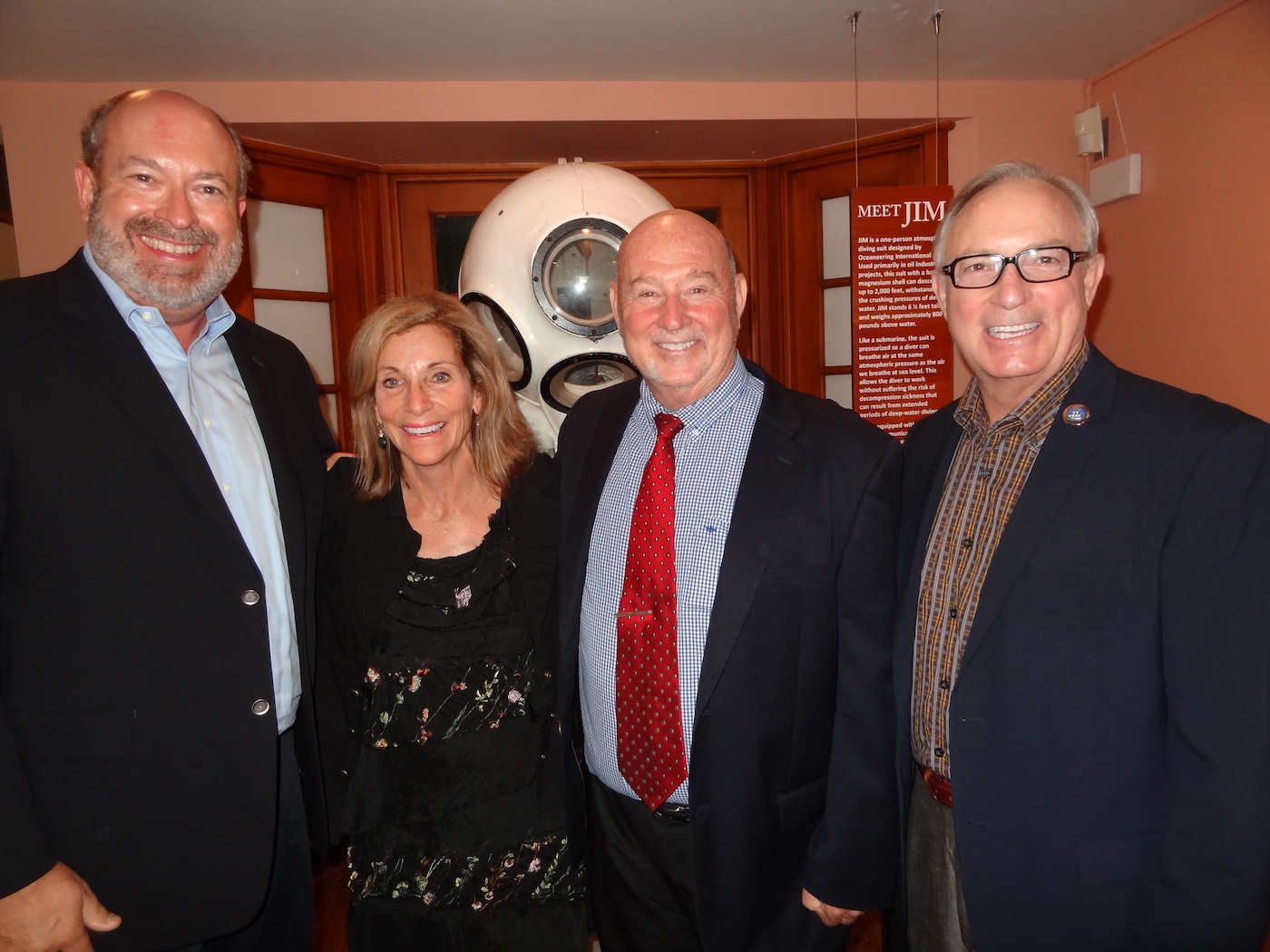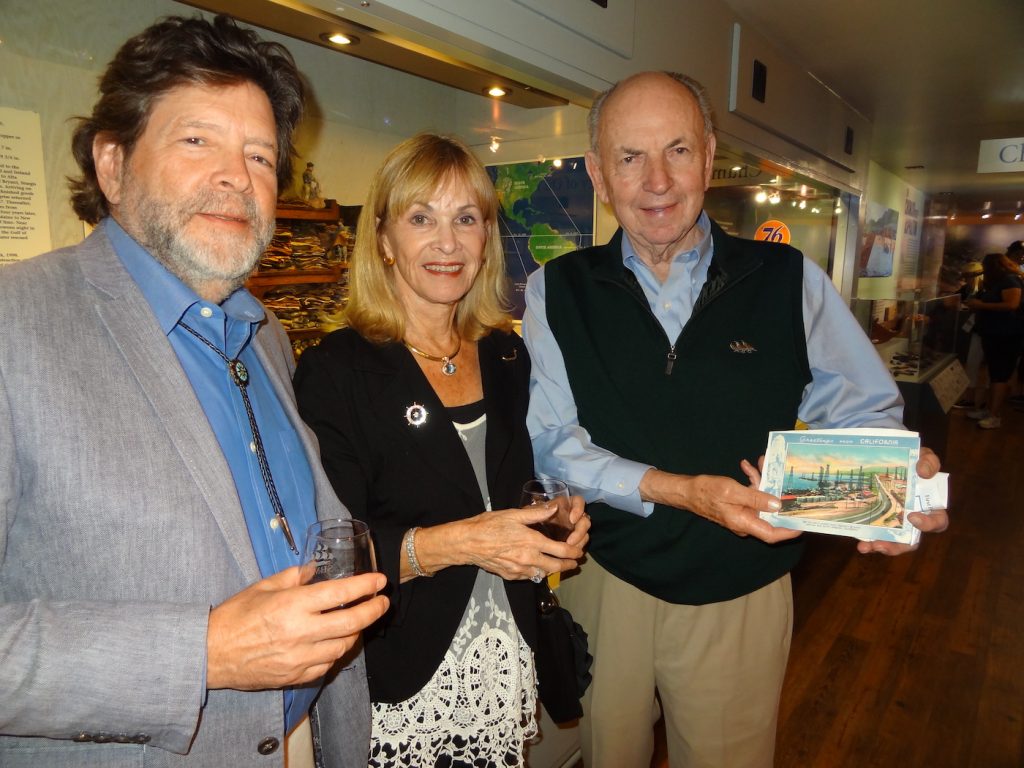Oil in Santa Barbara Channel

The Santa Barbara Maritime Museum (SBMM) opened its doors to a new exhibit. As executive director Greg Gorga told the visitors, “This is the largest exhibit the museum has ever had. The History of Oil in Santa Barbara Channel has been planned for many years.”
As we all know when we come home from a walk on the beach with tar on our shoes, there is a natural seepage in our area, especially in Summerland. The Chumash knew it too and used asphaltum (or tar) to make their tomals or boats. From 1890 to 1898, asphalt from Goleta, Carpinteria, and More Mesa was mined and shipped around the country. Some historic streets of New Orleans are paved with tar from the Alcatraz Asphalt Company’s mine on land in Goleta that is now part of UCSB.
Sometime before 1894, prospectors saw the natural deposits of oil and gas were why there were seeps and dug the first wells, even 150 offshore. It’s hard to imagine that Summerland beach was covered with hundreds of ugly oil towers. They didn’t last long, with only a few left by the 1920s.
However, it spurred another industry, which was the development and technology of commercial diving. Santa Barbara became recognized worldwide as the birthplace of deep-water commercial diving. They needed men to go down more than 1,000 feet to drill and seal wells. Local residents invented the first commercial lockout diving bell and much more.

We all realize that an oil platform is like a small city, and their undersides serve as an artificial reef, which attracts many fish and marine life. The oil processing and handling problems led to the modern environmental movement. On January 28, 1969, there was a disaster felt round the world. A blowout on an oil platform six miles off the coast of Santa Barbara spilled between 80,000 to 100,000 barrels of crude oil into the channel and onto our beaches. Dolphins, seals, sea lions, and thousands of sea birds were killed.
One year later, the first Earth Day was held. It is now a tradition observed in the United States and in 175 other countries around the world.
Oil is an integral part of our daily lives. From a 42-gallon barrel of oil, only 19.4 gallons are used to produce gasoline. The rest goes to ink, bicycle tires, nail polish, skis, guitar strings, shampoo, and even footballs.
Come to SBMM and learn about all this interesting local history. They have 40,000 visitors every year at 113 Harbor Way. For more details, call (805) 962-8404 or visit sbmm.org. Your donations help the museum reach out to the youth in our town, which makes history come alive.







